Insights
Google Ads Vs Facebook Ads: Which Is Suitable For Your Campaign In 2025?
On Digitals
16/10/2025
47
The Google Ads vs Facebook Ads debate is the premier strategic challenge every marketer faces when planning for 2025. Choosing the right platform is more than just a budget issue, it requires a clear understanding of each “giant’s” core operating philosophy to maximize investment efficiency as well as which platform your target audience frequents and what they look for on said platforms.
How do Google Ads work?
Google Ads is a massive Pay-Per-Click (PPC) platform, used globally for digital advertising. At its core, Google Ads is a paid advertising system where marketers bid to display their ads through keyword-based targeting, which involves compiling the most cost-effective and relevant keyword lists and utilizing several formats such as text, video, and banner ads.
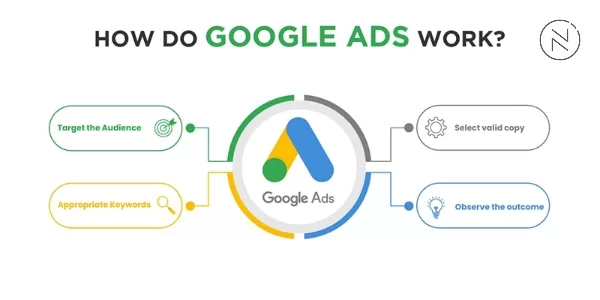
How do Google Ads work?
Advertisers place bids using various models based on their campaign needs: Cost-Per-Click (CPC), Cost-Per-Thousand Impressions (CPM), Cost-Per-Action (CPA), or Cost-Per-View (CPV). Google then displays the ad corresponding to the bid amount and the ad’s Quality Score.
Consequently, the effectiveness of your advertising campaign, relative to your competitors, is heavily influenced by your bidding strategy and your willingness to invest.
How do Facebook Ads work?
Currently, Facebook Ads is known as part of a collective called Meta Ads (which includes other platforms in their ecosystem such as Instagram and WhatsApp), allowing you to reach an audience through various marketing campaigns across the Meta suite of platforms. Your primary tasks involve selecting a campaign objective, defining your audience, setting a budget, and monitoring the campaign’s performance.
The platform operates by targeting users based on their demographics or online behavior across platforms owned by Meta, which you have full control over what traits of the audience you want to target. You have a variety of formats to choose from—such as image, video, and carousel ads—to serve diverse advertiser needs.
Google Ads vs Facebook Ads: The Key Differences
While both Google Ads vs Facebook Ads are major platforms providing advertising services, analyzing each reveals fundamentally different operational models and strategic approaches from these two advertising giants. This contrast is vital when planning your digital marketing strategy and determining which platform best meets your campaign goals.
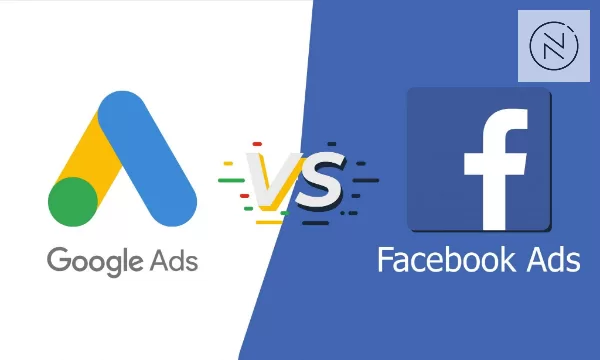
The key differences between Google Ads vs Facebook Ads
About The Format: Intent vs. Discovery
The key difference in format between the two platforms is Intent vs Discovery. This distinction fundamentally determines which content types and ad formats work most effectively on each platform when comparing Google Ads vs Facebook Ads.
Google Ads: Leveraging Purchase Intent
Google Ads utilizes user intent very effectively. Ads only appear when users are actively searching for information or keywords related to their immediate needs, making Google Ads vs Facebook Ads a clear example of how intent-driven targeting becomes a powerful tool for demand capture.
- For example, Shopping Ads and Text Ads only appear when someone searches for keywords like “buy,” “shop,” or other intent phrases, combined with a product or service name. This is how you reach customers with immediate needs.
- Specifically, here are the formats offered by Google: Google provides formats including Text, Responsive, Image, App Promotion Ads, Video, Shopping Ads, and Call-only Ads, serving primary advertising objectives like Search, Display, Video (YouTube), and Shopping.
Facebook Ads: Leaning Towards Customer Discovery
Conversely, Facebook Ads (Meta Ads) leans towards customer Discovery. The platform uses algorithms based on demographics, interests, and past behavior to display ads:
- Ads in formats like images and videos appear with content about products or services that users have previously engaged with or are likely to be interested in, even if they aren’t actively searching. The goal is to create demand and drive action.
- With Facebook Ads, the platform offers formats focused on visual appeal and social interaction: Image Ads, Video Ads, Carousel Ads, Collection Ads, Lead Ads, and Instant Experience Ads.
Payment Model: Paying for Intent vs. Attention
The most pronounced difference in cost structure lies in how the two platforms price impressions and interactions, which is central to the Google Ads vs Facebook Ads debate:
- Google Ads (CPC): The primary cost model is CPC (Cost Per Click). You pay to “buy” the customer’s intent—ideal for the Bottom-of-Funnel stage.
- Facebook Ads (CPM): The primary cost model is CPM (Cost Per Mille). You pay to “buy” the customer’s attention via 1,000 impressions, ideal for the Top-of-Funnel stage and building awareness.
Ad Placement
Ad placement is a crucial factor that determines the context in which a customer sees your message. Google and Facebook operate in distinct environments:
- Google Ads: Ads appear across a Vast Network, Intent-Focused: Google Search (highest intent), Google Display Network (GDN), and YouTube.
- Facebook Ads (Meta Ads): Ads reside within a Social Environment, Discovery-Focused: News Feed, Stories/Reels, Messenger, and Audience Network.
Target Capabilities
Targeting capability is the determining factor for campaign effectiveness, and this is where the philosophical difference between Google Ads vs Facebook Ads is most apparent.
- Google Ads: Intent-Based Targeting. Capturing existing demand. Core targeting revolves around Keywords (Search Network) and In-Market Audiences (those actively researching a product).
- Facebook Ads: People-Based Targeting. Discovering and generating demand. Core targeting relies on Demographics, Interests, Behaviors, and Lookalike Audiences (who the user is and what they like).
Tracking and Analytics Abilities
Tracking and measurement capabilities are key to evaluating campaign success when comparing Google Ads vs Facebook Ads.
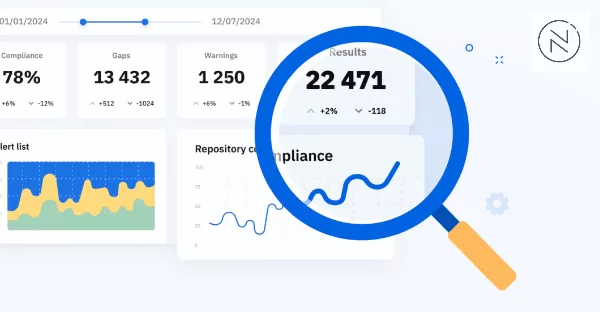
Tracking and analytics of each platform
- Google Ads: Focuses on tracking Conversions after a click, Keyword Performance, and the full Purchase Funnel via Google Analytics (GA4) while also providing data on specific actions (click).
- Facebook Ads (Meta Ads): Tracking View-Through Attribution (conversions after only viewing the ad) and Social Behavior via the Meta Pixel. Provides data on behavior and attribution (view/social).
We have thoroughly analyzed how Google Ads vs Facebook Ads differ across the board, from their formats (Intent vs. Discovery) and payment models (CPC vs. CPM), to placement and targeting capabilities. Grasping these differences is the first step. Now is the time to transition from technical analysis to practical strategy, learning exactly when to prioritize Google Ads for intent capture or Facebook Ads for demand generation.
When To Use Google Ads vs Facebook Ads?
The choice between Google Ads vs Facebook Ads is not about selecting which platform is “better,” but rather choosing the platform that aligns with your overall marketing campaign objectives at each stage of the sales funnel.
Choosing Based on Objective and Platform
Ad effectiveness depends on what you are trying to achieve. Therefore, you need to clearly define your objectives and the target audience you are aiming for.
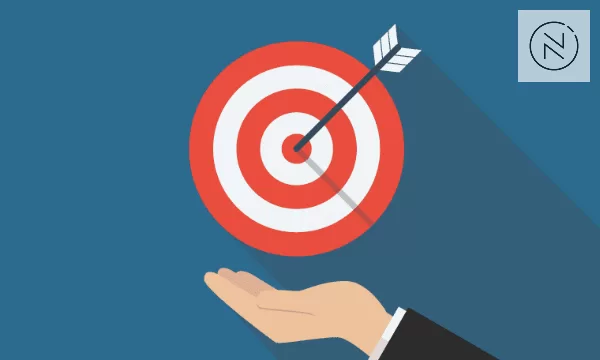
Determine clear targeting goals for the campaign before choosing
Choose Facebook Ads When You Need To:
- Build Authority and Credibility: Establish brand trust and reputation.
- Introduce Business Products: Launch and promote new or visually appealing products.
- Engage with Communities: Participate in communities that share the same insights and interests as your target audience.
Choose Google Ads When You Need To:
- Drive Revenue from users actively searching for your product or similar solutions.
Consider Based on Industry
Depending on the business, certain platforms yield better results within the same phase, cost structure, and placement.
- For Fashion and Cosmetics (Visual & Brand Focus): You should invest in connecting the brand with the target customer through emotion and imagery. With Facebook Ads, you can effectively achieve those campaign goals using ad formats like Carousel Ads (to showcase collections) or Video Stories (short, engaging content).
- For Emergency Services and Repairs (Immediate Need): When someone has a broken pipe, they don’t scroll Facebook for a solution. They need an immediate fix. Google Ads with Search Ads and Call-only Ads is the only viable option.
- For E-commerce: This is a sector that requires both. Facebook Ads helps generate demand (Discovery) and introduce products; Google Ads with Shopping Ads helps capture demand (Intent) the moment a customer is ready to buy.
The most effective strategy in the Google Ads vs Facebook Ads landscape is to use Facebook Ads to build relationships and interest (create demand) at the top of the funnel, and then strategically use Google Ads to “intercept” and convert those potential customers when they begin their search and purchasing process.
Why Not Combine Google Ads and Facebook Ads?
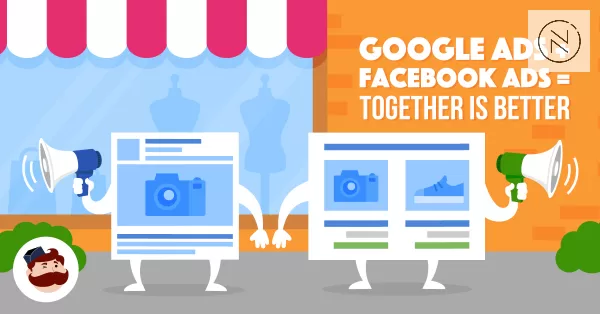
Combining Google Ads and Facebook Ads makes the performance better.
This is a practical question for any marketer. Combining Google Ads and Facebook Ads is not just an option but a comprehensive marketing strategy that allows you to achieve Full-Funnel Domination and address customer needs at every stage of the sales journey. The perceived opposition in the Google Ads vs Facebook Ads debate is actually a powerful complement.
Leverage the strengths of each platform to create a more seamless campaign by focusing on these strategic areas:
Optimize for Comprehensive Reach (Full-Funnel Coverage)
- Facebook Ads (Demand Generation): Use CPM-based and Discovery campaigns at the top of the funnel to introduce your brand and new products to target audiences based on their interests and demographics.
- Google Ads (Demand Capture): Use CPC-based Search Ads and Shopping Ads based on Intent at the bottom of the funnel to convert customers who already know exactly what they need. This combination ensures no potential customer is missed.
Enhance Remarketing Effectiveness (Cross-Platform Engagement)
- Multi-Channel Power: When a customer views a video ad on Facebook (raising awareness) and then searches for the product on Google (increasing intent), combining the two platforms allows you to track and serve remarketing ads in both places.
- Build Trust: Customers who see your brand consistently across multiple platforms (social feed, search results page, news websites) reinforce trust and accelerate the purchasing decision.
Leverage Cross-Platform Data Synergy
- Improve Audience Quality: Use conversion data from Google Ads (your actual buyers) to build high-quality Lookalike Audiences on Facebook Ads.
- Refine Messaging: Analyzing search keywords on Google can help you refine and create more compelling visual or video ad content on Facebook.
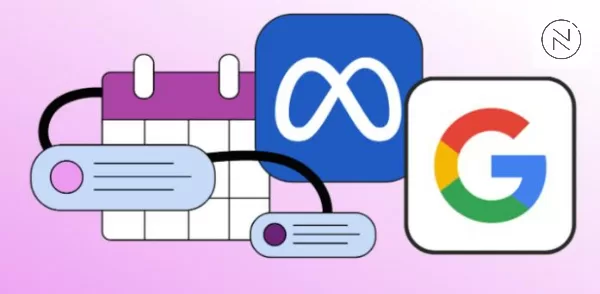
Utilizing the power of multiple platforms.
In summary, the best strategy is not Google Ads VERSUS Facebook Ads but Google Ads PLUS Facebook Ads. Combining them allows you to optimize your budget by paying for attention (CPM) at the top of the funnel and intent (CPC) at the bottom.
FAQs: Google Ads Vs Facebook Ads: Which Is Suitable For Your Campaign In 2025?
1. What is the main difference between Google Ads and Facebook Ads in 2025?
Google Ads focuses on intent-based targeting, showing ads to users who are actively searching for solutions. Facebook Ads (Meta Ads) relies on discovery-based targeting, reaching people based on demographics, interests, and behaviors even if they are not searching.
2. Which platform is more cost-effective: Google Ads or Facebook Ads?
It depends on your campaign goals. Google Ads uses CPC (you pay for clicks based on intent), while Facebook Ads uses CPM (you pay for impressions to capture attention). For conversions, Google Ads may be more cost-effective, while Facebook Ads is often better for awareness.
3. When should I choose Google Ads over Facebook Ads?
Google Ads is more suitable if your goal is to capture immediate demand—for example, users searching for emergency repairs, specific services, or ready-to-buy products. It’s ideal for bottom-of-funnel campaigns focused on driving sales.
4. When is Facebook Ads better than Google Ads?
Regarding the Google Ads vs Facebook Ads choice, Facebook Ads works best for creating demand and building brand awareness, especially in industries like fashion, cosmetics, or lifestyle. It allows you to visually showcase products, build trust, and engage communities before customers actively search.
5. Can I combine Google Ads and Facebook Ads in one strategy?
Yes. The most effective approach in 2025 is using both platforms together. Facebook Ads helps generate demand at the top of the funnel, while Google Ads captures intent at the bottom. Together, they create a full-funnel marketing strategy that maximizes reach, conversions, and ROI.
Maximizing Google Ads vs Facebook Ads in 2025 with On Digitals
In 2025, the Google Ads vs Facebook Ads 2025 debate is not about which platform is better, but about how to use each effectively. Google Ads captures demand through intent-based targeting, while Facebook Ads builds demand through discovery. The most powerful strategy is combining both to maximize reach, conversions, and ROI.
At On Digitals, we help businesses unlock this potential with tailored strategies across Google Ads and Facebook Ads. Our team ensures you reach the right audience, optimize your budget, and achieve measurable growth in 2025.
NEWEST POSTS
- Micro Influencer Marketing For Better Reach And Stronger Engagement
- How to Build Topical Authority SEO for Stronger Rankings and Trust Online
- AI Overviews SEO – Guide To Its Impacts On Search Visibility!
- AI Video Marketing: Definition And How It Works In Detail!
- AI For Market Research: Revolutionizing The Digital Age In 2025!
Read more
